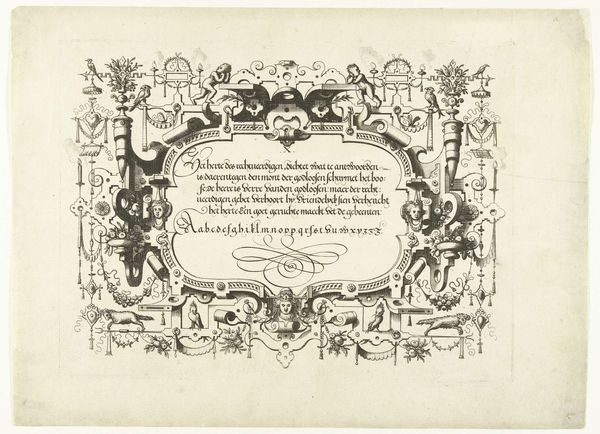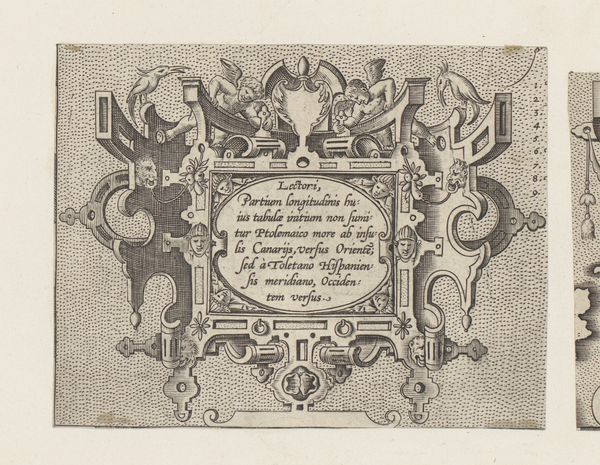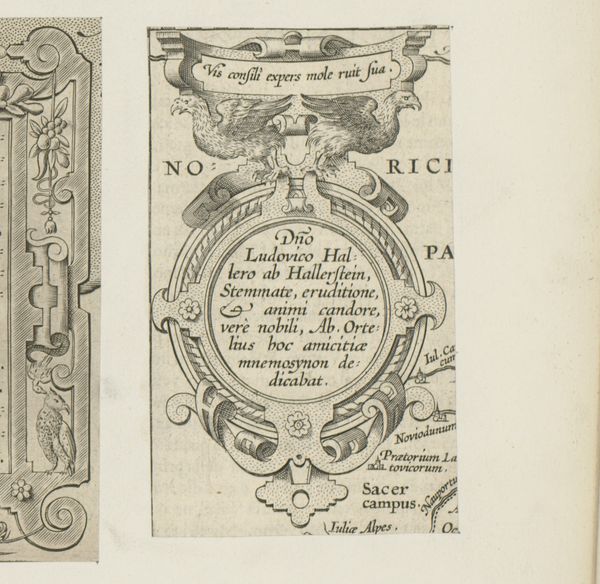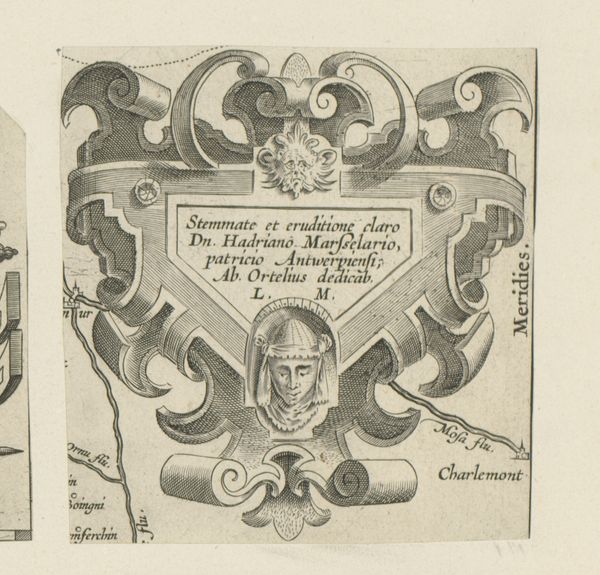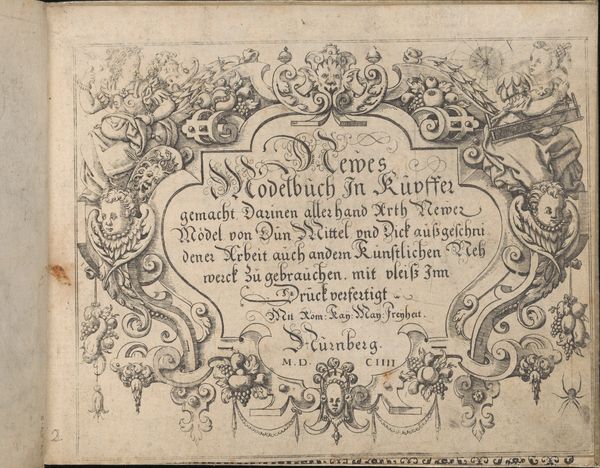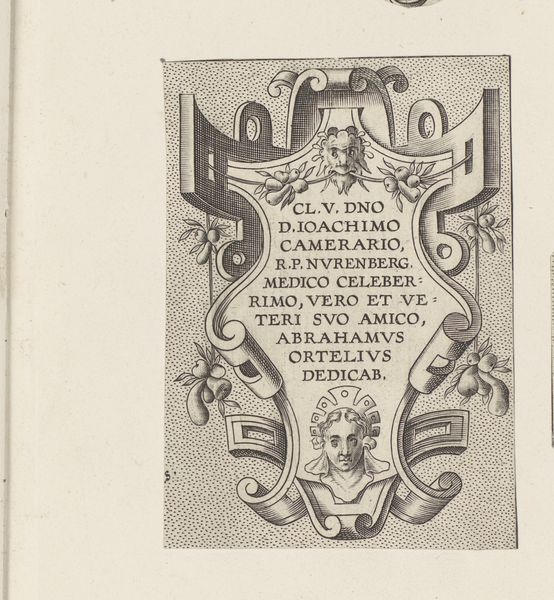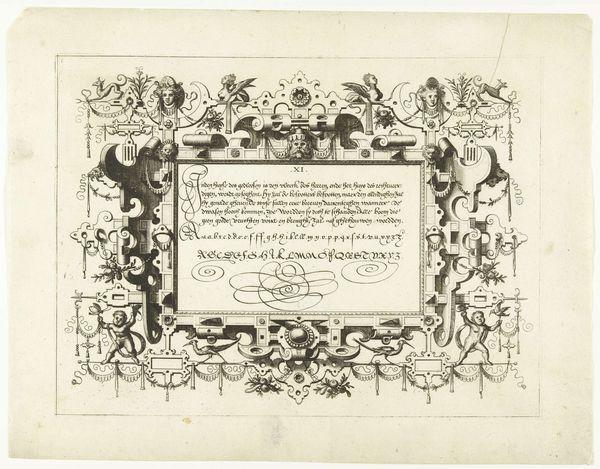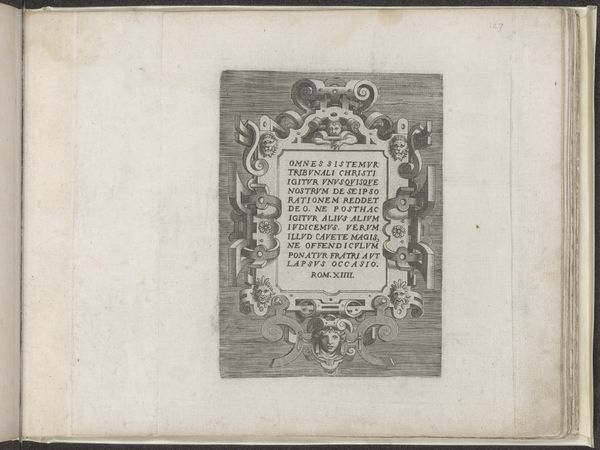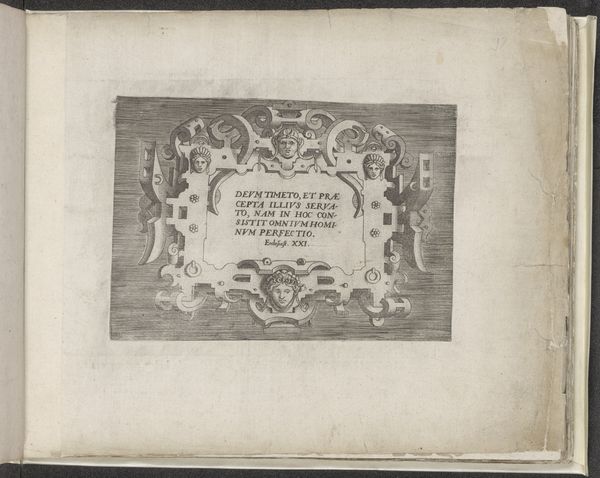
Corona delle Nobili et Virtuose Donne: Libro I-IV, page 83 (recto) 1601
0:00
0:00
drawing, print, sculpture, woodcut, engraving
#
drawing
#
narrative-art
# print
#
book
#
coloured pencil
#
sculpture
#
woodcut
#
italian-renaissance
#
engraving
Dimensions: Overall: 5 1/2 x 7 11/16 in. (14 x 19.5 cm)
Copyright: Public Domain
Editor: So, this is a page from Cesare Vecellio's "Corona delle Nobili et Virtuose Donne," dating back to 1601. It seems to be a woodcut or engraving, depicting a fox examining a sculpted head. I find the level of detail within such a small space quite impressive. What stands out to you when you look at it? Curator: What grabs me immediately is the materiality of the printmaking process itself. We see the labor involved in the carving of the woodblock and the production of multiple copies. It democratizes images, making them accessible beyond an elite, painted commission. The "high art" of sculpture is here confronted by the "lower art" of print, raising questions of value and dissemination. Consider the social context; how would an artisan in Vecellio's time have perceived the relation between handcraft and intellectual pursuit as seen in the allegory of the fox? Editor: That's a really interesting point. I hadn't thought about it in terms of the labor and the print as a multiple. Is there also commentary about the difference between natural skill of the sculptor, the fox itself, and intellect being presented? Curator: Precisely! It poses questions about artistic skill. The print asks us if skillful craftsmanship is diminished or elevated through the intellectual act of understanding its artistic making, given it lacks an intangible essence, or ‘spirit.’ What kind of consumption is being encouraged through this imagery? Editor: I see what you mean! Thinking about it that way shifts the focus from just the image to the means of its creation and circulation. Thanks for offering your insight into this artwork's tangible and conceptual making. Curator: Absolutely! Thinking about the means of production enriches the whole viewing experience, right?
Comments
No comments
Be the first to comment and join the conversation on the ultimate creative platform.

